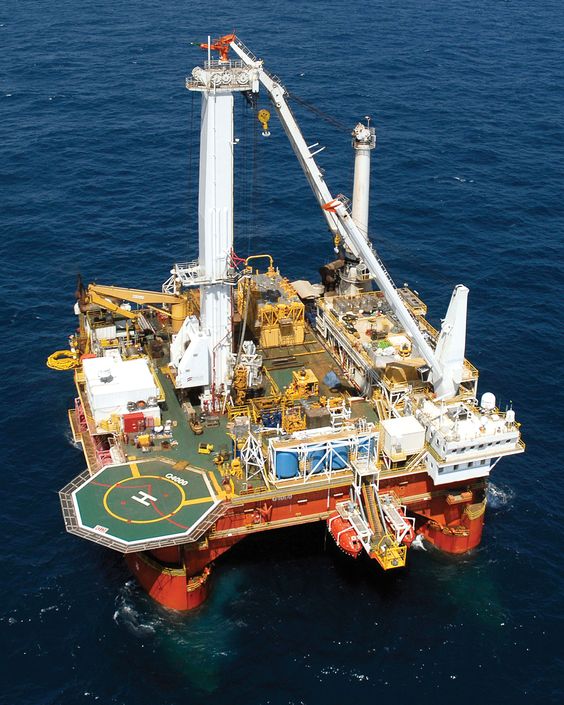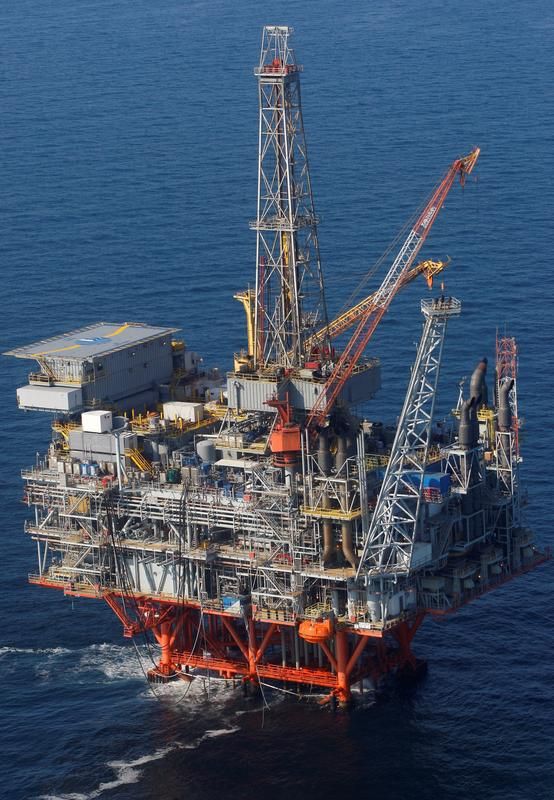The application of FRP (Fiberglass Reinforced Plastic) grating on offshore drilling platforms is increasingly popular due to its excellent properties such as corrosion resistance, lightweight structure, high strength, and long-term durability in harsh marine environments. Offshore drilling platforms face extreme conditions, including high salinity, humidity, oil exposure, and potential chemical spills. FRP grating is an ideal solution to meet these challenges and improve both safety and operational efficiency on these platforms. Here’s a detailed description of how FRP grating is applied to offshore drilling platforms:
1. Corrosion Resistance in Harsh Environments
Offshore drilling platforms are constantly exposed to seawater, salt, oil, and other corrosive substances. Traditional materials, such as steel, are prone to rust and deterioration in such environments, requiring frequent maintenance and replacements. In contrast, FRP grating, made from fiberglass and resin, offers exceptional resistencia a la corrosión, allowing it to maintain its structural integrity and appearance over time, even in the most aggressive marine environments.
Aplicaciones:
- Walkways and Access Platforms: FRP grating is used in walkways, passageways, and access platforms where workers need to move safely around the platform. The grating prevents corrosion from seawater exposure and provides a durable walking surface.
- Equipment Platforms: FRP grating is ideal for platforms that support machinery and equipment, as it is immune to the corrosion typically caused by exposure to seawater, oil, and chemicals used in offshore drilling.
- Drainage Covers: FRP grating is commonly used to cover drainage systems or water runoff channels on platforms. These drainage areas are exposed to harsh chemical and water conditions, and FRP offers long-lasting protection.
2. Lightweight for Easy Handling and Installation
The weight of construction materials is a crucial factor on offshore drilling rigs, as it affects structural integrity, installation efficiency, and safety. FRP grating is much lighter than steel or aluminum grating, reducing the overall load on the platform’s structure. This makes it easier to handle, transport, and install, reducing labor and transportation costs.
Aplicaciones:
- Stairways and Ladders: FRP grating is often used in stairways, ladders, and vertical access areas. Its light weight simplifies installation and reduces the load on the platform structure.
- Support for Pipes and Equipment: FRP is also used in supports and racks for pipes and other systems, where a lightweight structure is necessary to prevent overloading and ensure platform stability.
3. High Strength and Load-Bearing Capacity
Despite its light weight, rejilla de plástico reforzado con fibra is incredibly strong and capable of bearing heavy loads. The design of the grating involves a fiberglass reinforcement that ensures excellent strength, enabling it to withstand the mechanical stresses and heavy traffic that offshore drilling rigs often face. FRP grating can be customized to support high loads from heavy machinery, tools, and personnel.
Aplicaciones:
- Machinery Platforms: Heavy drilling equipment, generators, and machinery need a strong support structure. FRP grating can bear the weight of such equipment without warping or cracking.
- Decks and Walkways: Offshore rigs require high-traffic walkways and decks, which must support the constant movement of workers and equipment. FRP grating's high load-bearing capacity ensures it remains functional under constant use.
4. Slip Resistance for Worker Safety
On offshore platforms, the combination of water, oil, and other substances creates slippery conditions. Slip-resistant properties are critical for safety in these environments, where accidents can lead to serious injuries. FRP grating often comes with a textured surface or additional coatings to provide enhanced slip resistance. This makes it especially useful in areas where workers walk or stand for extended periods.
Aplicaciones:
- Walking Paths and Platforms: FRP grating is applied to all areas where personnel walk or work. The slip-resistant surface reduces the risk of slips, trips, and falls.
- Staircases and Ladders: Stair treads and ladder rungs made from FRP grating offer additional safety by preventing slipping, even in wet or oily conditions.
- Workstations: Areas where workers are performing tasks or operating equipment are equipped with slip-resistant FRP grating to ensure stability and safety.
5. Electrical Insulation for Safety
Offshore drilling rigs involve heavy electrical equipment, and preventing electrical hazards is a high priority. FRP grating is non-conductive, meaning it does not conduct electricity. This electrical insulation property helps to protect workers and prevent electrical accidents in critical areas.
Aplicaciones:
- Electrical Areas: FRP grating is often used around electrical panels, switchboards, and equipment rooms to ensure electrical safety. It prevents the risk of electrical shocks in areas where wires or equipment might be exposed.
- Cable Trays and Conduits: FRP is often used in cable trays and areas where electrical cables are run. This prevents potential electrical hazards from cables or other exposed conductors.
6. Temperature Resistance in Extreme Environments
Offshore rigs are subject to temperature fluctuations, with exposure to high heat from the sun and extreme cold in certain regions. FRP grating is resistant to both high and low temperatures, which makes it well-suited for environments where thermal expansion or contraction could damage other materials.
Aplicaciones:
- Exposed Platforms: For parts of the platform that are exposed to direct sunlight, FRP grating does not warp or degrade under high heat.
- Cold Climate Areas: In regions where offshore rigs operate in cold temperatures, such as the Arctic, FRP grating maintains its integrity and strength, ensuring that platforms remain safe and operational even in freezing conditions.
7. Durability and Low Maintenance
FRP grating is known for its long service life and low maintenance needs. It does not rust, corrode, or require frequent replacement, unlike steel grating. This makes it a cost-effective solution for offshore drilling platforms where the harsh environment demands materials that can endure long-term exposure without frequent repairs.
Aplicaciones:
- Long-Term Use in High-Traffic Areas: Walkways, staircases, and other high-traffic areas benefit from the long-lasting durability of FRP, reducing the need for frequent replacements and minimizing downtime.
- Hard-to-Reach Areas: Areas that are difficult to access for maintenance, such as under platforms or around machinery, are ideal for FRP grating. Its resistance to wear and corrosion means it can endure without requiring constant attention.
8. Customization for Specific Platform Needs
One of the major benefits of FRP grating is its ability to be customized to meet the specific needs of different areas of an offshore platform. It can be fabricated in different shapes, sizes, colors, and configurations, allowing for flexibility in design and application.
Aplicaciones:
- Custom Walkways and Platforms: FRP grating can be molded to fit the exact dimensions of a platform, ensuring a perfect fit for any space, no matter how complex the design.
- Specific Use Cases: FRP grating can be tailored for use in areas with unique safety requirements, such as fire-rated areas or zones where chemicals are handled. It can also be tailored for heavy-duty use in locations with extreme load-bearing needs.
The use of FRP grating on offshore drilling platforms offers numerous advantages, such as resistencia a la corrosión, lightweight design, high strength, slip resistance, electrical insulation, y low maintenance. These properties make FRP grating an ideal material for harsh marine environments, where safety, durability, and long-term performance are critical. The grating is applied in various areas on offshore platforms, including walkways, equipment platforms, stairways, drainage covers, y cable supports. By leveraging FRP grating, offshore rigs can achieve a safer, more efficient, and cost-effective operation.


